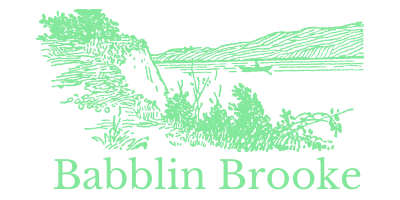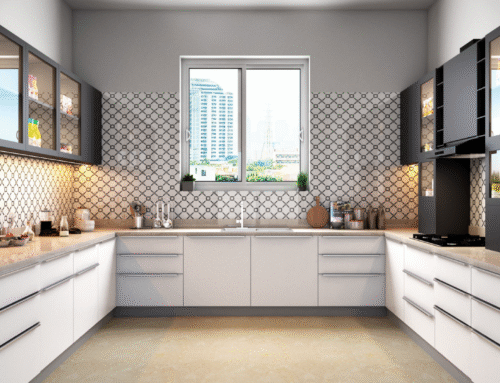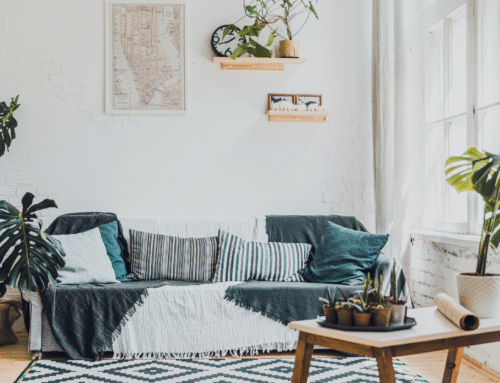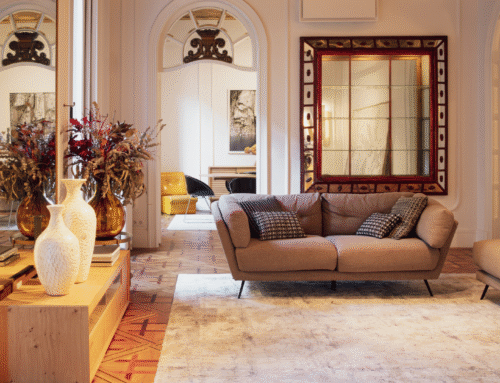The world of home decor is constantly evolving, with fresh ideas emerging each season. As homeowners seek to create inviting and personalized environments, a few standout trends are gaining traction. This year, the focus is on sustainable materials, bold colors, and multifunctional spaces.
Natural elements are becoming a central theme, as more people prioritize eco-friendly choices in their decor. This shift not only enhances aesthetic appeal but also promotes a healthier living environment. With a rise in remote work, the need for versatile spaces that adapt to various activities has prompted creative solutions in home design.
Color palettes are also shifting, moving away from minimalism to embrace rich, vibrant tones that add character and warmth. These trends reflect a desire for individuality and comfort, encouraging homeowners to express their unique style. As these themes take center stage, they provide an exciting opportunity for anyone looking to refresh their living space.
Key Interior Design Trends in Home Decor
Current interior design trends emphasize a blend of functionality, nature, and striking elements. Key styles focus on enhancing living spaces through natural features, adaptable layouts, and bold lighting choices.
Biophilic Design
Biophilic design seeks to connect occupants with nature. This trend incorporates elements such as natural light, greenery, and organic materials into home environments.
Using indoor plants, living walls, and nature-inspired decor enhances air quality while also creating a calming atmosphere. Architects and designers are increasingly opting for large windows to maximize natural light.
Materials like wood, stone, and water features are favored for their tactile qualities. This design approach not only improves aesthetic appeal but also promotes well-being.
Multi-Purpose Spaces
The trend towards multi-purpose spaces addresses the need for versatility in modern living. With more people working from home, it’s crucial to maximize every square foot.
Designers are focusing on creating flexible areas that serve different functions. Furniture with built-in storage, such as ottomans or modular sofas, is popular.
Open floor plans facilitate seamless transitions between work and relaxation zones. Foldable or extendable tables can adapt to various needs, making spaces efficient and functional.
Statement Lighting
Statement lighting serves as a focal point in home decor, blending functionality with artistry. Unique chandeliers, pendant lights, and decorative floor lamps are increasingly used to enhance interior designs.
These lighting fixtures come in various styles, from minimalist to elaborate, often reflecting the homeowner’s personality.
Finally, energy-efficient options, like LED lighting, are becoming more popular to combine sustainability with design. The right lighting transforms a space by emphasizing decor elements and creating ambiance.
Rising Popularity of Sustainable and Organic Materials
The demand for sustainable and organic materials in home decor is increasing. This trend reflects a growing awareness of environmental issues and a desire for healthier living spaces. Consumers are seeking materials that not only enhance aesthetics but also contribute to eco-friendly practices.
Natural and Eco-Friendly Materials
Natural materials like bamboo, cork, and linen are gaining traction in home decor. These materials offer durability and a unique aesthetic. Bamboo is particularly valued for its rapid growth and ability to withstand wear. Cork, harvested sustainably from tree bark, is prized for its insulation properties.
Natural textiles, such as organic cotton and wool, are increasingly used for upholstery and soft furnishings. Sustainable dyes and finishes further enhance their eco-friendliness. These materials reduce chemical exposure, making them ideal for health-conscious consumers.
Reclaimed Wood Applications
Reclaimed wood is becoming a favorite due to its unique character and sustainability. Sourced from old buildings, barns, or furniture, it provides a rustic charm while reducing waste.
Popular applications include flooring, cabinetry, and accent walls. The distinct textures and colors of reclaimed wood add visual interest and warmth to spaces. Additionally, it often requires less processing than new wood, making it a lower-impact choice.
Craftsmanship is evident in reclaimed wood furniture, where artisans highlight natural imperfections. This focus on quality and authenticity resonates with consumers who value bespoke items.
Incorporating Organic Elements
Incorporating organic elements into decor enhances both aesthetics and environmental consciousness. Houseplants, natural fibers, and organic shapes create a serene atmosphere.
Decorative items made from materials like stone, clay, or unprocessed metals contribute to this trend. These elements not only promote sustainability but also connect inhabitants to nature.
Textured textiles, such as jute or hemp, can be used in rugs or cushions, adding both warmth and an organic feel. By choosing items that reflect natural forms and materials, one promotes a harmonious living space.
Emphasizing the beauty of nature in home decor leads to a more calming and restorative environment.
Emerging Decor Details to Watch
Recent trends in home decor emphasize the importance of vibrant accent colors and the adoption of energy-efficient lighting solutions. These elements not only enhance aesthetics but also contribute to sustainability and comfort in living spaces.
Accent Colors and Textures
Accent colors play a crucial role in modern home decor. Rich hues such as deep greens, burnt oranges, and muted blues are gaining traction. These colors add depth and personality to interiors, making spaces feel more inviting.
Textures also complement these colors. Mixing smooth surfaces with tactile elements—like soft cushions, woven throws, or textured wall finishes—creates visual interest. For instance, pairing a bold color with natural materials like wood or stone can achieve a balanced look.
Homeowners are increasingly exploring the use of bold accent walls or colorful furnishings. Strategic placement of colorful accessories can also revitalize neutral palettes, allowing for personal expression without overwhelming the space.
Energy-Efficient Lighting Solutions
Lighting choices significantly impact the ambiance of a home. Energy-efficient lighting, like LED fixtures, is becoming a staple due to its long lifespan and reduced energy consumption. They offer a range of styles, from sleek modern designs to charming vintage looks.
Smart lighting systems are also emerging as a popular option. These solutions can be programmed to adjust brightness and color temperature, enhancing not only energy efficiency but also user convenience. For example, warmer tones in the evening promote relaxation.
Incorporating task lighting in key areas, such as kitchens or reading nooks, helps improve functionality. Designers recommend layering different light sources to create a well-lit yet cozy environment, accentuating spaces while promoting energy savings.
Smart Home Decor and Data Privacy Considerations
Smart home decor integrates technology to enhance convenience and efficiency in living spaces. As these innovations gain popularity, it is essential to consider the privacy implications of connected devices and applications.
Innovative Apps and Connected Devices
Smart home decor solutions rely heavily on apps and connected devices. Smart thermostats, lighting systems, and security cameras often communicate via cloud platforms. Users can control these devices remotely, but this connectivity raises concerns about privacy and data security.
Many applications generate large amounts of personal data. This includes location data, IP addresses, and user preferences. Companies like Yahoo and various brands may use this information for targeted advertising, resulting in personalized advertisements based on user behavior.
While many apps include privacy settings, it is crucial for users to regularly review their datenschutzeinstellungen and cookie-richtlinie. Ensuring appropriate security measures are in place is vital to protect personal information from unauthorized access.
Privacy and Personalization in Home Decor
Personalization in smart home decor enhances the user experience, but it also involves data management challenges. Users often provide personal information to receive tailored suggestions, yet this can lead to potential misuse of personenbezogene daten.
Companies frequently engage in Zielgruppenforschung to develop more focused marketing strategies. This research often relies on analyzing such data and purchasing habits. Users should be aware that aggregating their data can result in unintended exposure.
Transparency is crucial for maintaining trust. Brands need to communicate their data usage policies clearly, allowing users to make informed decisions. Utilizing features like a datenschutz-dashboard allows consumers to manage their data actively, ensuring a balance between personalization and privacy.






Leave A Comment